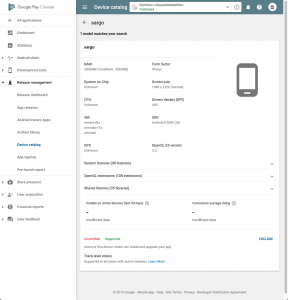We’ve long heard rumours of a ‘lite’ variant of the Pixel 3 range, and though it wasn’t launched last year alongside the other Pixel 3 devices, the rumours have persisted. Well, things are now as good as official, with the devices being certified by the IMDA (Info-communications Media Development Authority) in Singapore, and Google adding the devices to its own Google Play device catalogue.
The Singaporean certification refers to two model numbers – G020B and G020F – which have been referred to previously, giving us fairly strong confirmation that the two devices we suspect – a Pixel 3a and Pixel 3a XL – will be what’s launched.
Even Google’s Hiroshi Lockheimer has been busy teasing the new phones, as we shared earlier this week:
Android boss Hiroshi Lockheimer teases the Google Pixel 3a : release imminent?
The Singaporean certification gives us a glimpse at some technical details too, including a Qualcomm Snapdragon 670 octa-core processor, 4GB of RAM, and some typically impressive Pixel camera sensors. All we know is there’ll be an 8MP front-facing camera and 12MP rear, but how they’ll be configured, we don’t know yet.
Google’s entering of the devices into the Google Play device catalogue gives us some further details, but not too much.
Among the specifications listed are a 6-inch display on the larger Bonito (Pixel 3a XL) handset, with a resolution of 1,080 x 2,160. The smaller Sargo (Pixel 3a) will feature a 5.6-inch display with a slightly denser resolution of 1,080 x 2,220. Android 9 Pie should come as no surprise.
With so much information becoming available, it seems likely that Google must be readying to launch these new devices. The only question now is “when?”
With Google IO just around the corner, it seems as good an opportunity as any to launch two new devices, but phone launches at IO haven’t been a feature for quite a while now. As mid-range/affordable options, it seems odd to give these two devices such a high billing, but equally, it would also be unusual to give them their own launch event as the larger Pixel devices usually receive.





